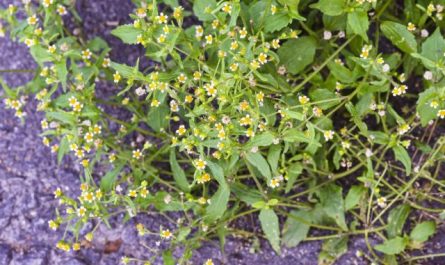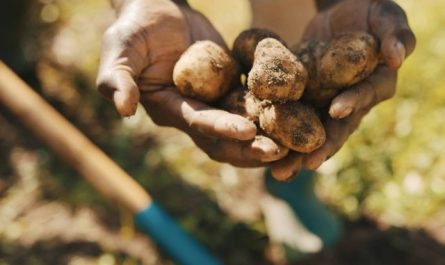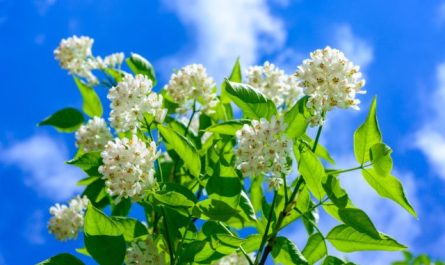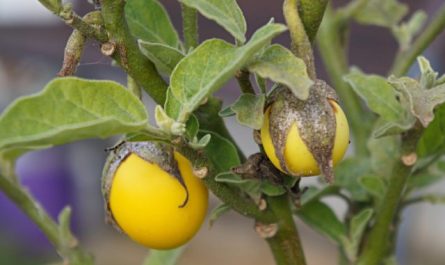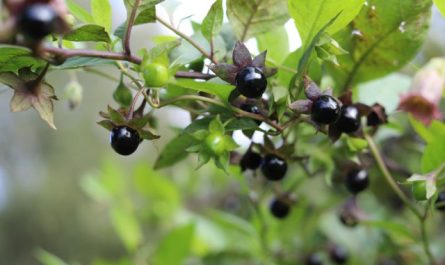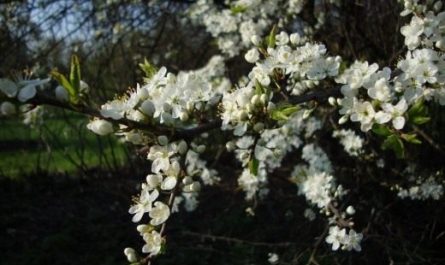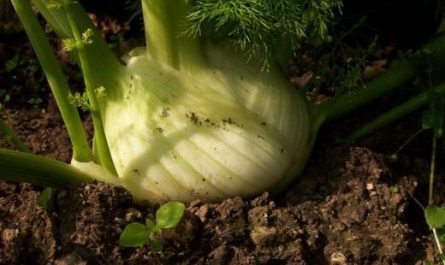Raspberries probably grow in every garden plot. For some, it is a “joy” for children, for others – healthy jam, filling for delicious desserts… In any case, when planting this crop, we expect consistently high yields and longevity from it. However, the plant does not always please us as we want, and raspberry diseases often interfere with a good harvest. Carbonate chlorosis, curl, mosaic, didymella, gray rot – what you can’t find in a raspberry patch! And here you need to know what to do, because if you can and should fight some diseases, then it is better not to waste time on others, but simply replace the plantings. In this article, I will tell you about the most common raspberry diseases and measures to combat them.

1. Iron chlorosis
Another name for iron chlorosis is calcareous, carbonate chlorosis. It is often found on carbonate soils, where the pH is equal to or higher than 7. It occurs because this type of soil retains iron in a form inaccessible to plants. It manifests itself as a lightening of the upper leaves, the veins of which remain green.

What to do, if your raspberry patch has chlorosis? Improve the air and water permeability of heavy soils. Mulch. Avoid using manure on carbonate soils. Ensure uniform watering. Treat the leaves with iron salts. Feed the plants with iron sulfate.
2. Didimella
The second name of didimella is purple spot of raspberry stems. This disease spreads with infected seedlings. Often gardeners pay attention to the disease when it appears on the leaves in the form of peculiar triangular spots going from the edge of the leaf blade to the middle, edged with a bright yellow stripe.

However, an earlier manifestation of the disease begins on young stems at their base and in places where leaf petioles are attached in the form of small purple spots. Over time, these spots grow, merge, forming rings. The affected tissues darken, dry out and crack. Second-year shoots infected with didimella dry out in early spring, starting from the top.
What to do? Avoid thickening of plantings. Remove fruiting shoots in a timely manner. Destroy infected plant residues in a timely manner. For prevention, spray with a 1% Bordeaux mixture before bud break in spring and after harvest.
3. Mosaic
Mosaic is a viral disease. It is transmitted by aphids and planting material. It is not curable. It appears on the leaves as a marble pattern. If the disease is severe, the leaf blades may become deformed. The berries grow tasteless and woody. The bushes gradually degenerate. Affected plants may lag in growth; in frosty winters, the bushes freeze.

4. Verticillium wilt
Another name is verticillium wilt, VILT. The fungus attacks the roots of the plant. Spreading through the vascular system, it clogs it. As a result, the affected root system of the raspberry rots, and the above-ground part withers and dries out.

What to do? Remove (together with the soil lump) and burn dead bushes in a timely manner. In case of mass damage, pour a 0,2% solution of Fundazole under the root.
5. Curly hair
You can see different symptoms of leaf curl, depending on the sensitivity of the variety to the virus. On some varieties, leaf curl manifests itself only in the form of ring-shaped chlorotic spots with clearly defined edges. On others, the fruiting shoots are thickened and shortened. The leaves are hard, brittle, dark green, wrinkled, with edges bent downwards. The veins on them first become glassy and then die off. By autumn, the foliage changes color to bronze. Diseased plants develop poorly. The berries they produce are small, woody, dry, and sour to taste.

Sometimes the tops of individual annual shoots dry up. Flowers are formed with atypically small green petals, elongated stamens and shortened pistils. Their sepals are deformed and enlarged. Drupes do not develop from such flowers.
Also, with curl, you can sometimes see another characteristic manifestation – enations – peculiar leaf-like growths – are formed on the underside of the leaves.
What to do? Unfortunately, this virus is not curable. The only way to combat it is to remove it (along with the root system) and burn the entire affected bush in a timely manner.
6. Gray mold
Most often, we pay attention when the disease manifests itself on the fruits. Initially, small dark spots appear on the berries, which quickly grow in size. If the humidity is high and the weather is cool, a gray-smoky coating forms on the affected tissues – this is the sporulation of fungi. Affected berries are a source of infection for other berries.

If you look closely, you can see dark spots on the stalks, young shoots, and foliage. On the leaves, they are quite large and dark gray. On the shoots, they are elongated.
What to do? In the fall, it is necessary to remove plant debris, as the infection remains on them. In the spring, treat with Bordeaux mixture.
7. Anthracnose
It appears on young shoots, immediately after flowering, as light-grey spots with a wide purple border, which gradually merge, become dark, dry out and turn into grey longitudinal ulcers. Small cracks appear on dead tissues, the bark peels off. Lateral branches and leaves on affected shoots dry up. Greyish spots with a purple border, scattered along the veins, are also found on leaf blades.

What to do? After harvesting, remove fruit-bearing shoots without delay. Do not allow plantings to become too dense. Spray with 1% Bordeaux mixture in the spring. If the damage is severe, repeat spraying after harvesting and clearing the raspberry patch of diseased shoots.
8. Rust
The disease can be first detected in late spring on young shoots and young leaves in the form of slightly convex rounded yellow-orange spots. Later, fungal sporulation forms on the underside of the leaf blades – light orange growths. In the fall, a dark coating can be seen in their place – this is the wintering stage of the disease.

What to do? Remove fruit-bearing shoots immediately after harvesting. Do not allow the plantings to become too dense. In spring, spray the raspberry patch with 1% Bordeaux mixture. If the damage is severe, repeat the spraying after picking the berries and clearing the raspberry patch of diseased shoots.
9. Raspberry berry loosening
Rassypukha is a physiological disorder. It is discovered at the time of harvesting. Ripe berries are divided into separate drupes – literally crumble in the hands. Why this happens is still unknown, but crop losses (due to loss of marketable appearance) can be up to 30%.

The probable causes are: low air humidity due to insufficient soil moisture, virus infection, or untimely late harvesting.
10. Drupe spots
Another physiological disorder of raspberries, the second name of which is “berry burn”. It occurs mainly on the tops of shoots exposed to bright sun. But the causes of this phenomenon include not only sunburn, but also lack of moisture.

Dear readers! In this article, we have considered the most common raspberry diseases, but in fact there are many more. Please note that a properly chosen location for the raspberry patch and careful care will help to reduce the risk of any raspberry diseases to a minimum. Good harvests to you!


